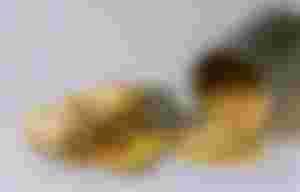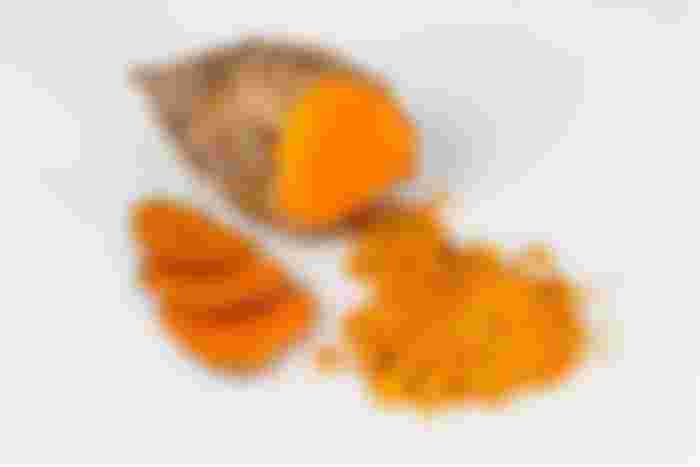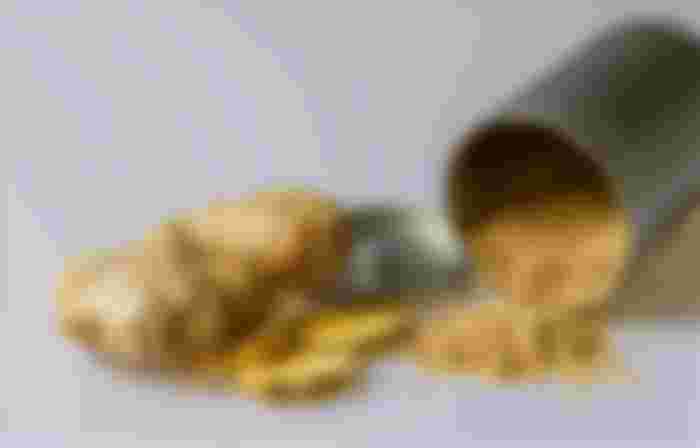Turmeric is the root of Curcuma longa, growing in the East Indies. It is used as a spice, alone or as the main ingredient in curry; as a medicine, especially against liver diseases; as dye, to colour silk, wool, etc.; and to produce turmeric paper, which is paper impregnated with turmeric and used as a test of the alkalis (turning it brown) and for boric acid (turning it reddish).

The yellow pigment is curcumin, and it is responsible for most of the medical effects of turmeric.
In Indonesia they make a drug, temoelawak (temulawak), from Curcuma zanthorrhiza, which is a close relative to C. longa (the common turmeric). Its medical effects are rather the same, although much stronger.
Turmeric has many interesting medical properties and can be used both preventively and as a cure against disease. The effect of regular use is considerable.
It protects, strengthens and stimulates the liver, which is one of the central organs of the body and one of the most complex. Some sort of liver dysfunction is often involved in the prelude to different serious diseases, such as cancer.
Turmeric is a strong antioxidant, which may explain some, but not all of its effects.
The anti-cancer effect is striking. Apart from being effective preventively, it ought to be included in, or added to every cancer cure. Curcumin reaches the cell membranes and protects them, which might be the main reason why turmeric so strongly protects against cancer.
It can normalise the blood sugar level. There are diabetics who were able to cease insulin treatment by taking one teaspoon of turmeric (or cinnamon, which has the same effect) before each meal. I would not say that this works for all diabetics, but it certainly has a generally strong preventive effect.
If you have diabetes and want to try this, do not experiment on your own! You must consult your physician! If your need for insulin is suddenly drastically reduced, your medication must be adjusted accordingly, otherwise it may become a life threatening condition.
Turmeric stimulates the immune system, which is generally important for health and the ability to combat disease; and it has cholesterol lowering properties; it stimulates lubrication of joints, and makes the body release natural cortisone. It is anti-inflammatory, and studies indicate that it might protect against or combat Alzheimer's disease, and perhaps even HIV.
How much to take? If you are healthy, 1ml, 1-2 times per day can be suitable for preventive and stimulating purposes. (1 teaspoon is approximately 5ml)
If you are ill, especially if you have cancer or liver disease, you can take 1-3 teaspoons per day, divided into 3-4 doses.
Never take more than one teaspoon per dose and do not take more than one teaspoon per day for more than one month at a time. The effects of higher doses have not been studied sufficiently.
Turmeric should be taken with some fat in order to be properly absorbed, and if it is ingested together with black pepper, its cancer-fighting power increases incredibly, up to 2000 times!
As a spice, to flavour food, turmeric is typically used in India, where it is one of the components of curry - but its use is spreading. It is also used to dye fabrics and as food colouring.
Incidentally, turmeric leaves are an aromatic spice in themselves. While not commonly used, they are not poisonous and they provide a specific and characteristic flavour.
If turmeric is the king of spices, ginger certainly is the queen.
Zingiber officinale, ginger, is one of the globally widest-spread spices, second only to pepper. In India and China is has been used to flavour foods and as a medicine for thousands of years. During European antiquity it was brought by sea to Greece and Rome. Later the Spanish took it to Jamaica and other islands in the West Indies, to cultivate it there. Today it is produced commercially in such diverse places as Japan, Nigeria, India and Jamaica.

Ginger is reproduced by planting pieces of the rootstalks (similar to potatoes). These rootstalks are in fact the ginger you can buy, fresh or dried and pulverised - to use as a spice or a medicine. Being a close relative to turmeric, it is quite as strong an antioxidant.
It very strongly stimulates the blood circulation in the body below the waist (intestines, urinary and sexual organs), with a special effect on gynaecological ailments.
In the stomach it stimulates secretion of digestive juices, thus strengthening the digestion of foods, balances the micro-organisms there and cleanses out many undesirable parasites.
Ginger is a vasodilator, i.e. it causes dilatation (expansion) of the blood vessels, especially in the skin. In a hot climate that increases sweating and ultimately it assists in cooling down the skin. It is also considered to be a general cleanser of the blood vessels.
For prevention and stimulation, ca 1 ml per day can be a suitable dose. For special ailments 2-3 teaspoons per day have been taken for years without any noticeable negative side-effect.
This article is based on material previously published in TMA/Meriondho Leo and in my e-book “Spices & Herbs”, 2018.)
Copyright © 2005, 2018, 2020 Meleonymica/Mictorrani. All Rights Reserved.
Here you find my articles related to health & medicine.
Interested in health & medicine, join my community "The Mechanisms of Health (d52e)"
You find all my writings on Read.Cash, sorted by topic, here.


Turmeric and ginger, nature's royal couple for health.
Thanks for sharing this really important information.